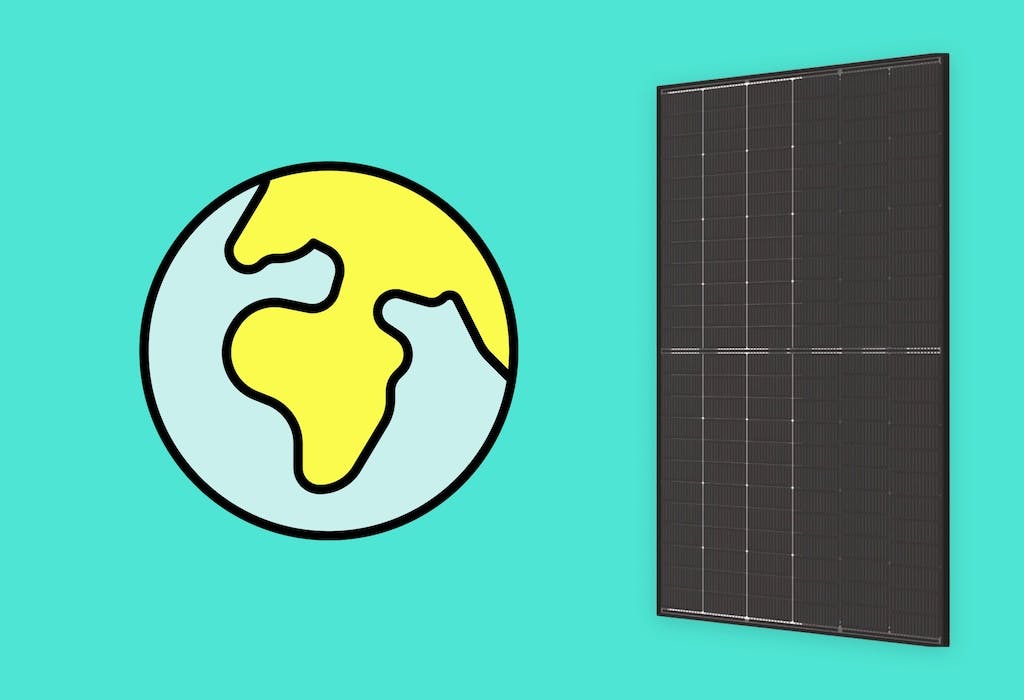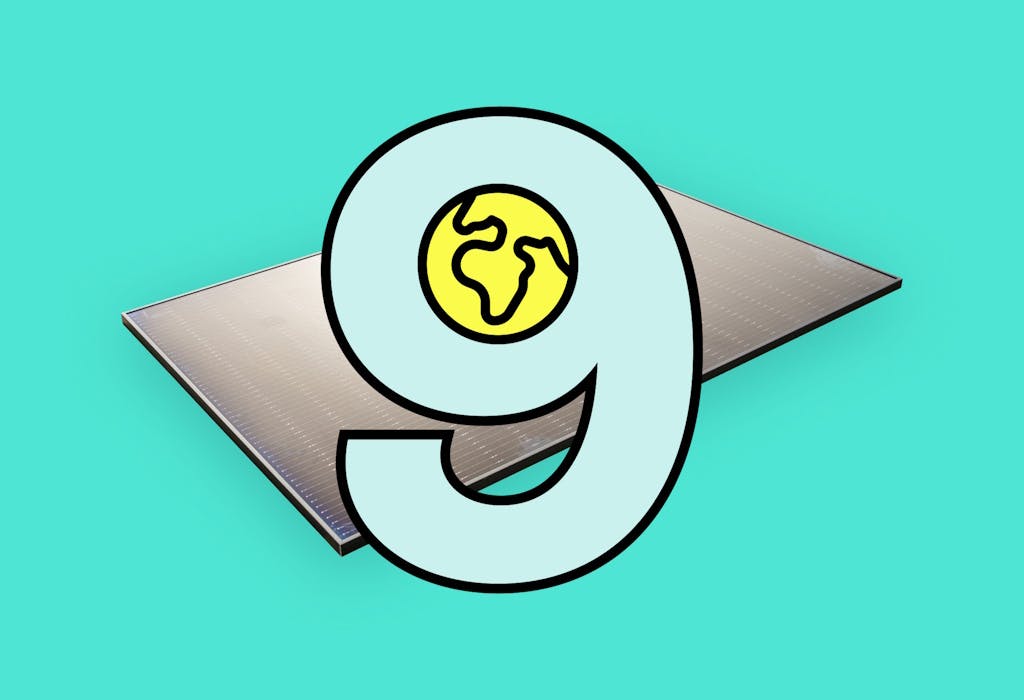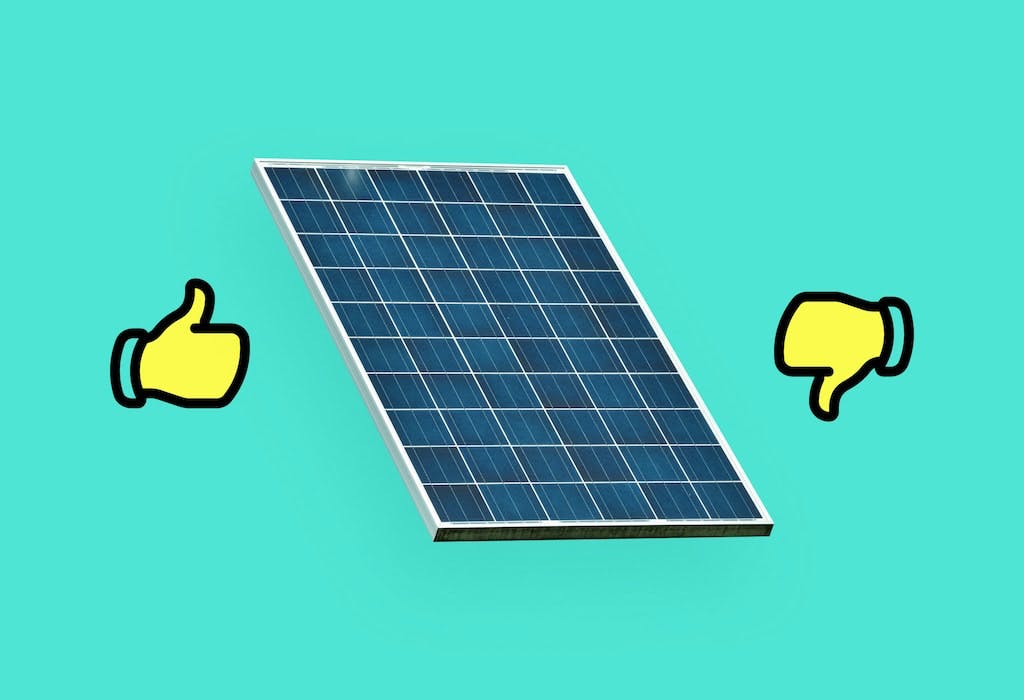- Solar advice hub
- Solar-energy
- 17 facts about solar panels
17 facts about solar panels
Solar energy is now the cheapest source of electricity in history, thanks to costs falling a whopping 70% in the last 10 years.


Why you can trust our content
We know that the solar industry is full of misinformation, but we only use reliable sources, including:
- Our experienced solar experts, installers and system designers
- Our own database of solar & battery system designs
- Authoritative bodies like MCS and the UK government




Calculate savings
What kind of home do you live in?
Calculate savings
What kind of home do you live in?
At a glance
Solar panels are leading the way in the global shift to cleaner energy, and have revolutionised the way we think about powering our homes and businesses.
According to government data, more than 1.6 million homes in the UK have solar panels on their roofs.
Whether you're considering installing solar panels or simply curious about their capabilities, read on as we uncover some fascinating facts about what makes solar panels an increasingly popular choice.
Find out how much you can save
What kind of home do you live in?
1. Solar panels need daylight, not sunlight
While direct sunlight is ideal, solar photovoltaic (PV) panels can still produce electricity as long as there's enough daylight reaching the panels. That’s why solar panels still work extremely well in countries that aren’t particularly known for sunny weather (such as the United Kingdom).
Because of how solar panels work, they’re still efficient even on cloudy days. In order to generate electricity, PV panels need photon particles - and these can be found in both direct and indirect light.
2. The first solar cell was invented in the 1800s
Solar cells, or PV cells, were first made in 1883 after New York inventor Charles Fritts coated selenium with a very thin layer of gold. However, it wasn't until 1954 when scientists at Bell Labs in the US created the first viable solar cells from silicon.
The first solar cells produced only enough power to operate small electrical devices. But luckily for us, advancements in solar technology have made today's panels a much more efficient and affordable renewable electricity source.
Check out how much solar panel efficiency has improved since the mid-1970s (based on data from the National Renewable Energy Laboratory, 2022):
3. Most solar panels contain silicon
Since the 1950s, most solar panels have been made from silicon (not to be confused with the rubbery silicone substance, which is made from the aforementioned mineral).
Silicon is a crucial component in solar panel manufacturing because of its excellent semiconductor properties for electricity generation. Manufacturers process and purify the silicon into salami-shaped ingots, which are then sliced into the thin wafers that become solar cells.
There are monocrystalline solar panels (which are usually black) and polycrystalline solar panels (which are usually blue). Find out why black solar panels are better than blue.
Manufacturers are working on alternatives to silicon, but no other material has yet achieved the same combination of efficiency, durability, and cost effectiveness.
To learn more, check out our guide to what solar panels are made of.
4. Solar panels will provide 25% of the world’s electricity by 2050
In 2022, the International Energy Agency (IEA) forecast that by 2050 one-quarter of the world’s electricity needs would be generated by solar panels.
Contrast that to 2021, when solar power provided just 3.72% of the world’s required electricity.
If you're interested, check out 19 more solar energy statistics.
5. Global solar panel production has skyrocketed
Each year, millions of solar panels are produced worldwide to meet the growing demand for renewable power.
According to recent estimates, global solar panel production reached around 379 gigawatts (GW) in 2022 - that’s almost 1.25 times larger than the UK's electricity consumption in 2021.
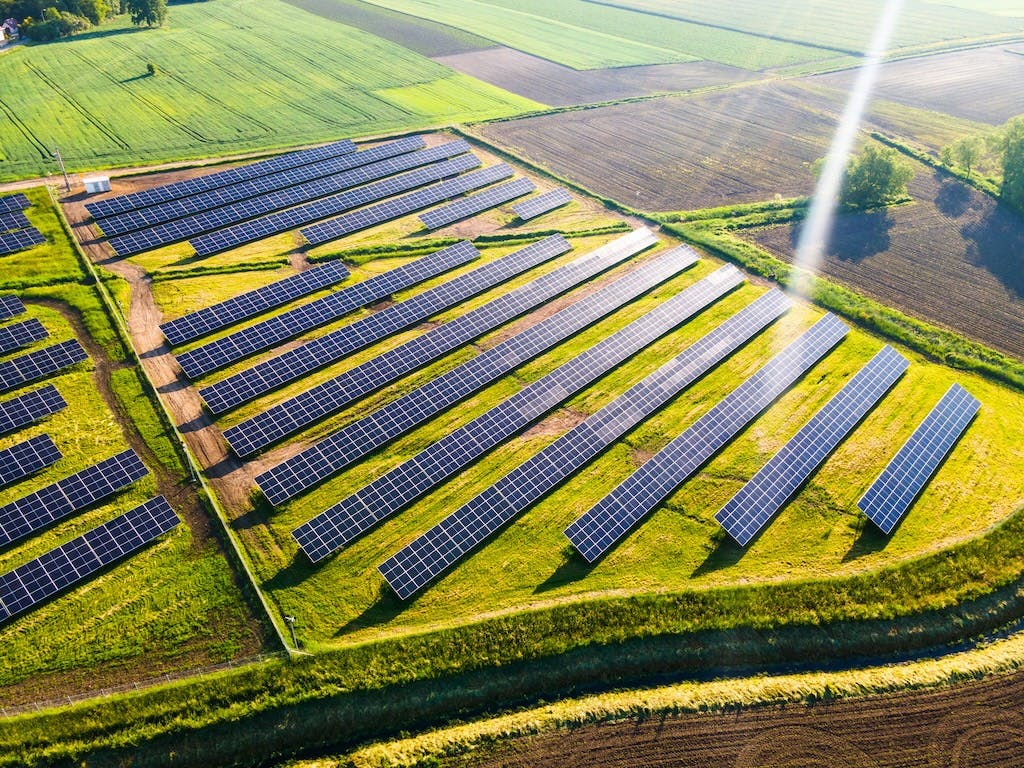
6. There are solar panels in space
Solar panels aren't just found on Earth but also way out in space.
In the vacuum of space, solar panels can capture pure sunlight with no pesky atmospheric interference, making them highly efficient. As you can imagine, these space-based panels are made of hardy materials that can withstand extreme temperatures and radiation.
Currently, the solar panels in space are limited to the International Space Station (ISS), as well as a few satellites.
It’s hoped that we’ll eventually be able to construct entire solar farms in outer space and send the electricity back to Earth, but this isn’t yet technologically possible.
7. Most solar panels are made in China
According to the International Energy Agency (IEA), over 80% of the global solar PV production processes are handled by Chinese manufacturers.
Though this has lowered solar panel costs over the past decade, you could argue that concentrating manufacturing in one place also comes with its fair share of risks.
For example, China’s lengthy pandemic-related lockdowns caused some significant global solar panel supply issues, and its pricing practices have caused the price of solar panels to plummet too quickly for US and European manufacturers.
To learn more, check out our rundown of the top countries for solar energy consumption.
8. You can get solar panels that look like roof tiles
If you’ve got the cash, you can now get smaller solar panels that are made to look like roof tiles. Offered in a variety of sleek designs, solar tiles provide a very discreet and attractive way to take advantage of the sun’s energy.
Solar roof tiles are especially useful for listed buildings and buildings in conservation areas, where standard solar panel installations will often fail to secure planning permission due to their disruption to the area’s aesthetics.
However, solar tiles are much less efficient than standard solar panels (usually only between 10-20% vs the 18-24% of regular panels), and come at a much higher price.
9. You can charge an EV with solar panels
Solar panels go hand-in-hand with electric vehicles (EVs) and offer a clean, renewable way of keeping them on the road.
When a household has solar panels and a solar-enabled EV charger, it’s easy to fill up an EV with clean, green electricity.
Given that there could be up to 11 million EVs on the UK’s roads by 2030, solar panels will become an increasingly important way of making these vehicles affordable to use.
Find out how much you can save
What kind of home do you live in?
10. There are transparent solar panels
Transparent solar panels are an exciting development in renewable energy technology, allowing sunlight to pass through them whilst still generating electricity.
As they're made from specialised materials that can absorb light in the invisible spectrum, such as ultraviolet and infrared, these panels can generate power without obstructing the view.
Transparent solar panels have the potential to be integrated into various surfaces, such as windows, building facades, and even smartphones, providing a seamless way to generate power without compromising aesthetics or functionality.
There are only a few real examples of transparent solar panels being used in the UK so far, such as a bike shelter in Cambridge, a bus stop in Canary Wharf, and Gloucestershire County Council Hall.
Transparent solar panels ideally need to become more efficient and less expensive before they can be used more widely.
11. Someone once invented a solar bikini
In 2011, New York designer Andrew Schneider unveiled a unique creation: the solar bikini. ‘Why?’, you may ask. Its creator was curious about whether it would be possible to make swimwear that could power a mini fridge for chilled beers at the beach. Naturally.
Equipped with 40 small PV film strips and a USB connection, the solar bikini couldn't quite power a fridge, but it could charge small electronic devices - making it not just a fashion statement, but a portable poolside power source.
While we can't comment on its comfort, it was actually safe to swim in the solar bikini. Despite its high-tech features, the only caveat was that the wearer would need to be completely dry before plugging a device into the bikini’s USB port.
12. There are roads made from solar panels
There have been several questionable attempts to build roads using solar panels.
One notable example is the Wattway solar road, which was built in a small village in Normandy, France, in 2016. The French government covered the rural road with resin-covered solar panels in order to generate electricity whilst vehicles passed over.
Unfortunately, the €5 million project ended up being a flop. The panels on the solar road were prone to coming loose and breaking into pieces, and were extremely noisy when driven over. And to make matters worse, the road didn't deliver on its promised electrical output because it was so inefficient.
Elsewhere, solar roads have faced similar criticisms for the same concerns. One solar road in Jinan, China, even had its panels stolen within a week of opening in late 2017.
13. Solar panels can endure extremely high temperatures
Solar panels are designed to withstand high temperatures, typically up to 65-85°C. They use heat-resistant materials and usually have ventilation to get rid of excess heat.
If the temperature exceeds the limit, the panels may slow down or stop working altogether (temporarily) to prevent permanent damage. But modern solar panel technology ensures panels are durable enough to continue generating electricity in tropical climates.
If solar panels couldn’t withstand extremely high temperatures, there wouldn’t be vast solar farms in scorching hot countries - such as Mohammed Bin Rashid Al Maktoum Solar Park, located 50 km south of Dubai.
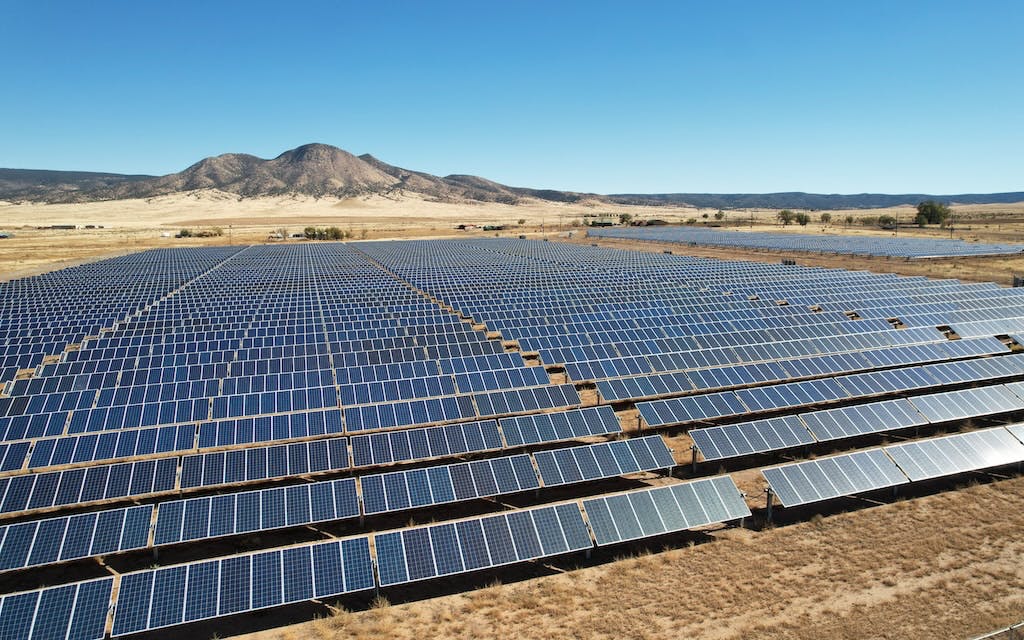
14. The biggest solar farm in the world could power Jamaica
The largest solar farm in the world, the Gonghe Talatan Solar Park in China, has a capacity of 3,182 megawatts (MW) or 3.18GW.
To put this into perspective, this solar park could potentially power the whole of Jamaica with clean and renewable electricity on its own, given that Jamaica’s electricity consumption in 2021 was around 3.2GWh.
The massive size of the solar park highlights the significant contribution that solar energy can make in meeting the energy needs of a region.
15. You can now have pink or patterned solar panels
Good news for eco-conscious creatives: solar panel prettification has come a long way, and now you can choose from a variety of colours courtesy of specialty panel manufacturers.
By using varied dyes, coatings, and materials, solar panels can be made to look like anything other than black, blue, or transparent, offering more design flexibility and aesthetic integration.
That said, coloured panels (particularly lighter-coloured ones) may be pricier and less efficient compared to traditional black or blue panels because of their increased light reflection.
Dutch startup Soluxa and Italian firm Peimar are just two of the companies to sell a variety of colourful solar panels.
16. Solar panels can be an art form
Some artists have embraced solar panels by incorporating them into their installations.
The Solar Panel Art Series, founded in 2017, transforms decommissioned solar panels into canvases for artists, while the first ever Qatar Solar Art Festival in the same year showcased exhibitions powered by the sun.
Solar-powered art installations like these are examples of where creativity meets sustainability. These initiatives exemplify how artists can create interactive and visually stunning art pieces that promote environmental consciousness.
17. The materials used to make solar panels won’t last forever
Some materials manufacturers use to make solar panels have a limited lifespan. While silicon, the key component, is abundant in the Earth's crust, the extraction process consumes energy and resources.
It's expected that silicon reserves will last for several centuries. But there might be a shortage of other minerals used in solar panels, like silver and indium, which are used in smaller amounts.
Thankfully, research and development efforts are underway to both improve solar panel efficiency and explore alternative materials so there's a sustainable future for the renewable energy industry.
For example, many solar panel manufacturers are exploring the use of copper as an alternative to silver, as it’s much cheaper and more abundant.
Related articles

Written byMelody Abeni
Based in London, Melody is a specialist green technology writer who has been covering sustainability, climate action and ESG for the past five years, after gathering operational experience in green investing and financial services. She has written for various industry publications, including renewable technology advisor The Eco Experts, and she holds a Master’s degree in law from Birkbeck University.

